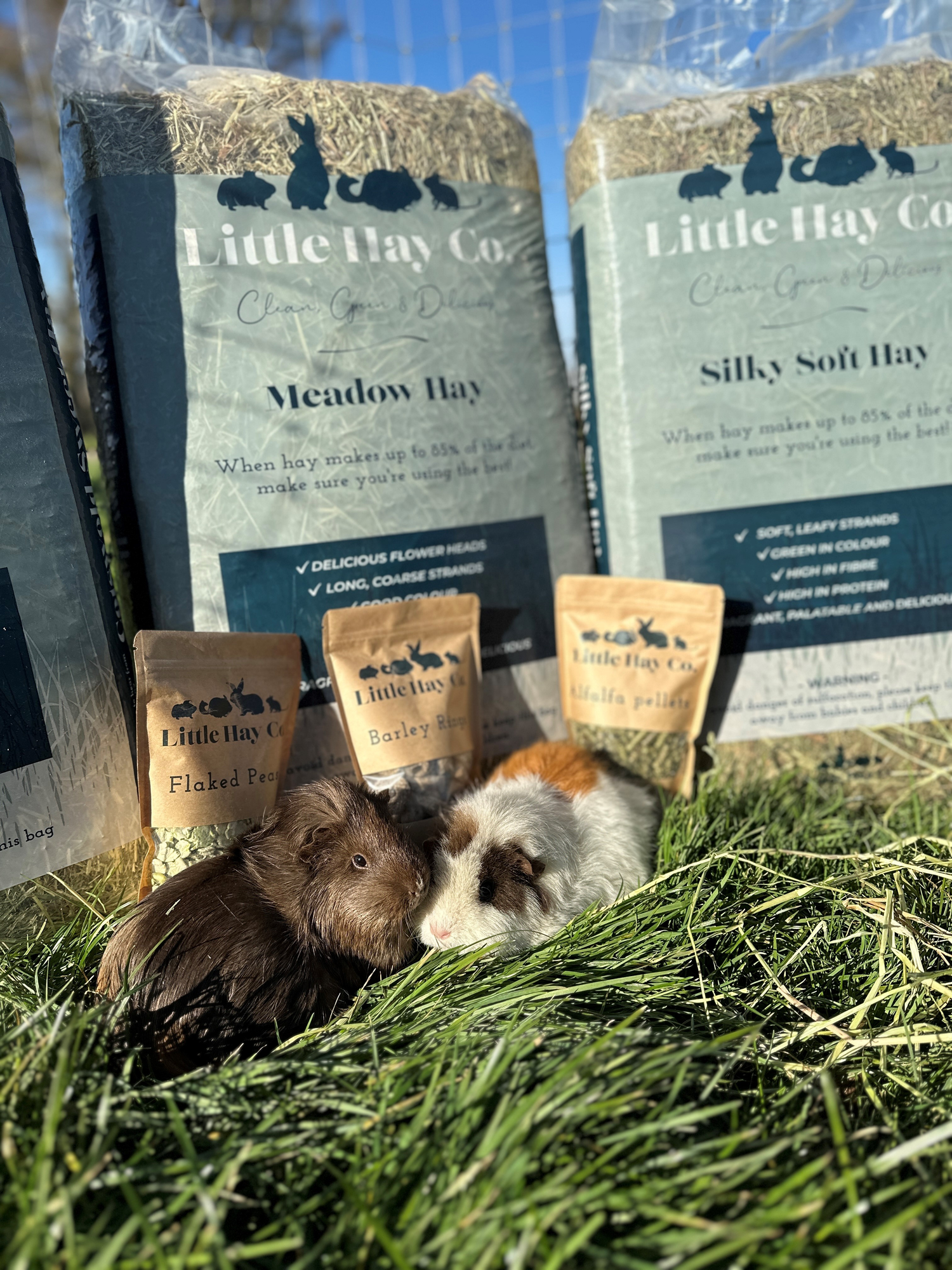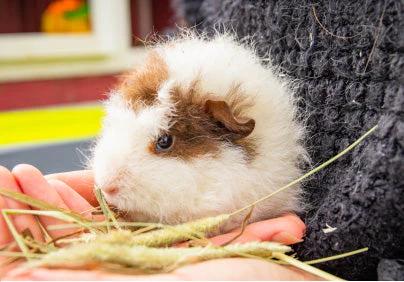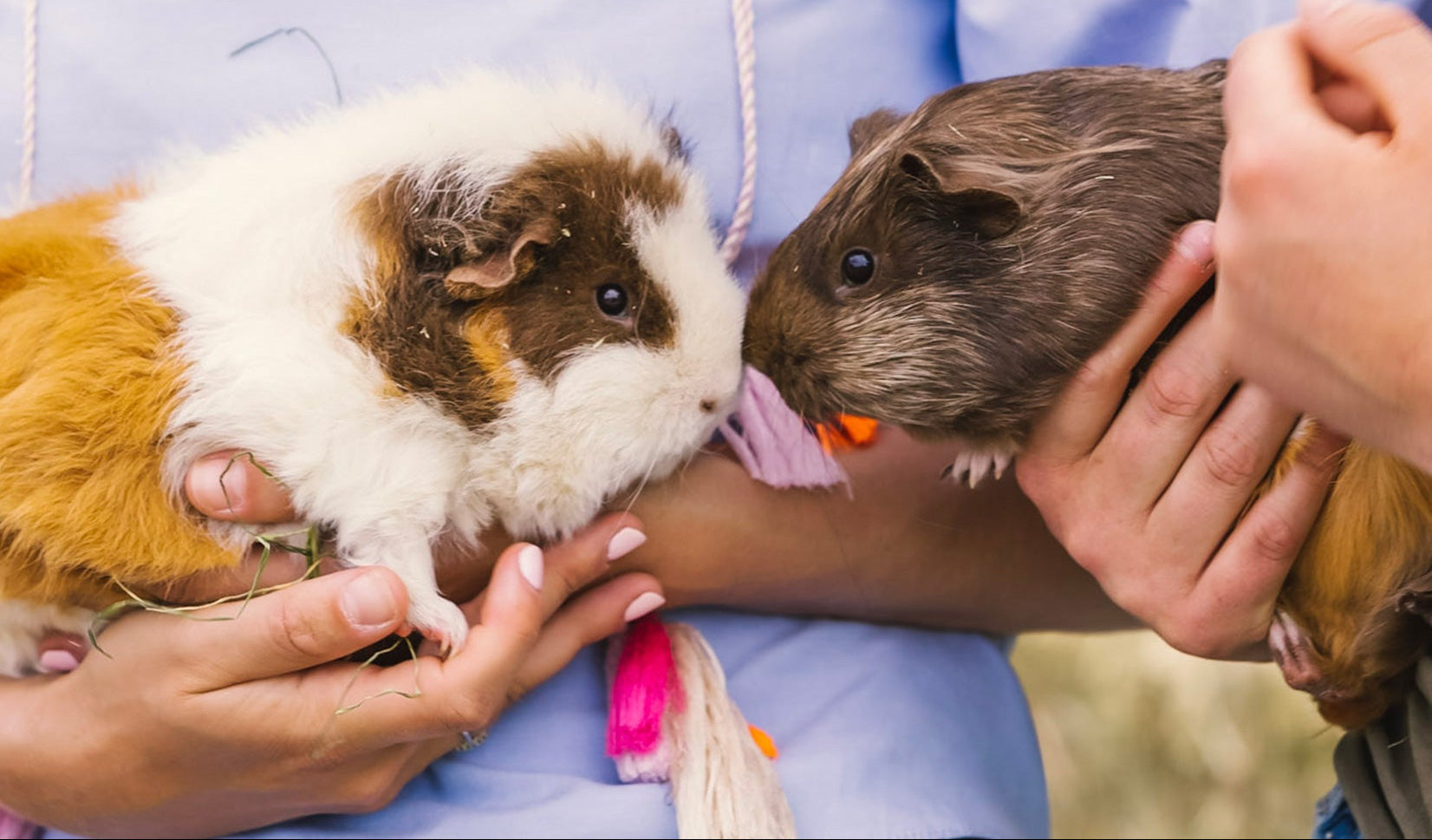Meadow hay is one of the most common hays fed to both Rabbits and Guinea Pigs but let's take a look at how we make sure it is safe to feed our pet. Let's also take a look at why it is so popular, it's nutritional values and it's benefits as a daily feeding hay.
Why is Meadow Hay So Popular?
Meadow hay is a popular daily feeding hay for both Rabbits and Guinea pigs because most pet owners see this as the closest match to what wild animals would have access to. This would make a great case for it being a safe and suitable daily feeding hay for your pet.
There is no such thing as a Meadow seed though! Meadow Hay is the generic name given to a field of mixed seed lays and because of this it is important you do your research if choosing this hay to feed to your pets as no two meadow hays will be the same. It is important to ask your supplier questions about the make up of their meadow hay and the nutritional values of things such as fibre, proteins and sugars to ensure you can safely balance and manage your pet's diet.
At Little Hay Co our Meadow hay description is clear and transparent, it is a meadow mix of Timothy, Fescue and Rye Grass hays making it full of nutrients, variety and crunch. Due to the Rye grass present in the hay it has a lovely golden, green colour and this is the hay we cut latest in the year to give maximum crunch factor! You can see our nutritional analysis for our hays on the packaging and boxes of each hay, plus check out our nutritional comparison here.
What is the make up of Little Hay Co Meadow Hay?
Each harvest will vary which is why regular testing of the harvest should be conducted. We complete annual testing of hay in our stores as well as test hays once the harvest is completed and the bales have settled. Every hay producer should be able to provide customers with analysis of their hay which is no more than two years old to give you piece of mind. At Little Hay Co we test for Dry matter, Crude Protein, Neutral Detergent Fibre (NDF) and Actual Detergent Fibre (ADF), Sugar & Digestible Energy.
Key Components Tested:
1. Dry Matter: This is the weight of the hay minus any water content. At Little Hay Co, we ensure that all our hays are dried to perfection to maintain quality. A lower moisture content avoids spores, fugus and toxins growing and developing in the hay. Our Meadow hay sits at around 92% dry matter.
2. Crude Protein: This measures the protein content in the hay, adults rabbits need to avoid hays such as Alfalfa which are high in Protein. Adult rabbits don't require protein in the same way that they require fibre for a balanced diet. A hay below 10% Crude protein is usually a safe bet as a daily feeding hay for adult rabbits while baby rabbits will benefit from hays higher in protein such as Alfalfa Hay. Our Meadow Hay has a crude protein level of 9% in comparison Alfalfa hay Crude Protein sits at around 24%.
3. Neutral Detergent Fibre (NDF): NDF represents the structural components of the plant cell wall, which can impact digestibility. NDF improves your pets gut barrier function and intestinal microbiota, hay should contain anywhere between 40%-65% NDF. Our Meadow Hay contains 54%. A high NDF can result in a lower hay intake so if your pet isn't eating enough hay this might be something to look out for. We need to remember that hay eating doesn't just help gut health and weight management but it also helps with dental health as our Rabbits and Guinea Pigs teeth are always growing.
4. Actual Detergent Fibre (ADF): ADF measures the less digestible components of the plant cell wall, providing insight into the energy content of the hay. If an ADF figure is higher, this will mean the hay will be broken down less in the gut. The ADF figure is the fibre that is less digestible and forms the roughage that keeps your pets gut moving and forms those all important poos. The percentage you are looking for in hay is anywhere between 30-45%. Our Meadow Hay is around 32% ADF.
5. Sugar & Digestible Energy: These components are crucial for providing energy to livestock and can impact their overall health and performance. Our Meadow hay has around 10% Sugar content.
By testing for these key components, hay producers can ensure that their Grass Hay meets the nutritional needs of UK pets and shows an intention to maintain and manage high quality standard in their crops.
What are the benefits of Feeding Meadow Hay?
- Usually a cheaper hay choice
- Provides a diverse and palatable hay for your pet often resulting in more hay intake
- Crunchy - this will vary between providers but ours is super crunchy so it is brilliant for teeth wear and gut health
- Hits all the right markers for nutritional analysis. It is a middle of the road hay from our analysis and doesn't have any results which are too low or too high.
So Is Meadow Hay Safe for My Pet?
Yes, Meadow hay is correctly seen as a safe feeding hay for your pet. We would just recommend you do your research when choosing your meadow hay. As your supplier for their analysis for key nutritional content and ask them what hay seeds are used to make up their Meadow fields. You are not being awkward - these are simple questions that every hay producers should have a quick answer for. Once you have this information you will be equipped to make a decision on if that hay suits your pets needs.
Meadow hay is a brilliant way to feed a natural variety of hays with just one purchase however you might still find your pet isn't eating their quota of hay. You might need to look at a different hay variety - thinking about a different texture or flavour to keep them going back to the hay rack.













